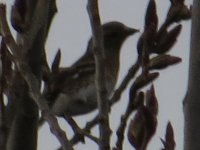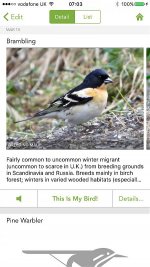Mark Lew1s
My real name is Mark Lewis
I didn't guess - I downloaded it and gave it a rough and ready sort of test. I must admit I found it to be pretty impressive, although I did manage to fool it a couple of times. There's a brief summary on my twitter feed. I may get round to running more tests on some more complex groups in the near future, such as the aforementioned acros, or LWH gulls, etc.
https://twitter.com/FatPaulScholes1
While I was impressed with its capabilities, I was left wondering what the future of birding will look like as this technology gets better and better, and becomes more and more commonplace. Will birders like us exist in the future? Why would anyone devote a lifetime to something when the answer is just a click away...
https://twitter.com/FatPaulScholes1
While I was impressed with its capabilities, I was left wondering what the future of birding will look like as this technology gets better and better, and becomes more and more commonplace. Will birders like us exist in the future? Why would anyone devote a lifetime to something when the answer is just a click away...





